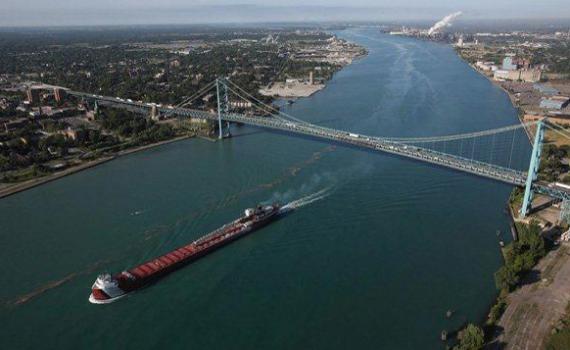In early May 2015, Jim Balsillie, co-founder of Research in Motion (now BlackBerry Ltd.), published an editorial in the Globe and Mail in which he said: “Canada’s terrible record of commercializing its ideas won’t change until we build proper infrastructure to help our entrepreneurs succeed on the global stage, where the real money is made.”
Balsillie‘s main reproach was that policies required for the innovation economy in Canada are simply inadequate or absent all together which equals in zero growth. He also mentioned how open borders are good Canadian oil, lumber and beef but that current policies didn’t address the ownership of ideas which is the basis of profitable commercialization.
A virtual wall has been built by successive Canadian governments that have neglected to make emerging technologies a trade priority making a trade and taxation update urgent.
The cornerstone of Canadian trade was set in 1960s when, by fear of being shut out of the auto manufacturing industry, policy makers in Ottawa came up with the Auto Pact. These days, the border that separates us from our southern neighbors seems to be less lenient pushing big industries and the government to make hard choices leading up to innovation.
Traditional Choices Failing

To stay afloat in the auto industry, Canadians have been throwing money into a new bridge to link Detroit to Windsor and as well, Keystone XL – on which the Canadian oil industry was heavily replying on, has been nixed pushing investors to look at new ventures in order to stay in the game. With traditional industries not looking so good, it’s now, more than ever, time that Canada pump up its presence on the market of new technologies such as robotics, nanotech, computation and energy.
To help move forward, two solutions seem like the obvious choice: assuring that Canada’s tax system matches the American venture capital tax incentives in order to encourage innovation and also, Canada needs to strike a new deal to create a customs union or tech Auto Pact so that workers, capital and goods can move more easily.
Allowing for greater labour mobility to the U.S. and the acquirement of capital back in Canada, should help decrease the Canadian brain drain to the South. Millions of highly educated entrepreneurs from Canada are currently living, working and investing in science, tech, engineering and financial hubs in Boston, New York and California. One can only imagine the power and innovation Canada is missing out on because the rules and regulations to favour emerging tech just aren’t in place.
The liberalization of bilateral immigration would allow Canadian entrepreneurs to set up shop down in the U.S. and easily commute from Canada – it might also motivate many Americans to move up to the Great White North for social or even political reasons and to take advantage of the Canadian talent.
Canada’s Tech Deficit
When we compare the numbers from Canada and the United States related to government and private sector research and investment, it’s quite obvious that the two countries are not in the same league.
The amount of venture capital investment in the U.S. comes up to US$40 billion in 2014 – compared to US$1.7 billion for the entirety of Canada. Government funded research and development comes up to US100 billion with an added US$200 billion from American universities and the private sector. Canadians, watching as local talent and investment dollars are fleeing to the south, are helpless without the proper legislation and tools in hand.
It doesn’t have to be that way.
The quickest solution to stop the brain drain and to finally create a profitable start-up environment in Canada is to adopt the American tax template and remove border impediments. New technologies are replacing traditional manufacturing and resource based sectors as key players in the economy – that association must become entrenched in upcoming financial strategies to be adopted by the Canadian Government if it doesn’t want to be left out in the dust.

 Payment
Payment  My Account
My Account